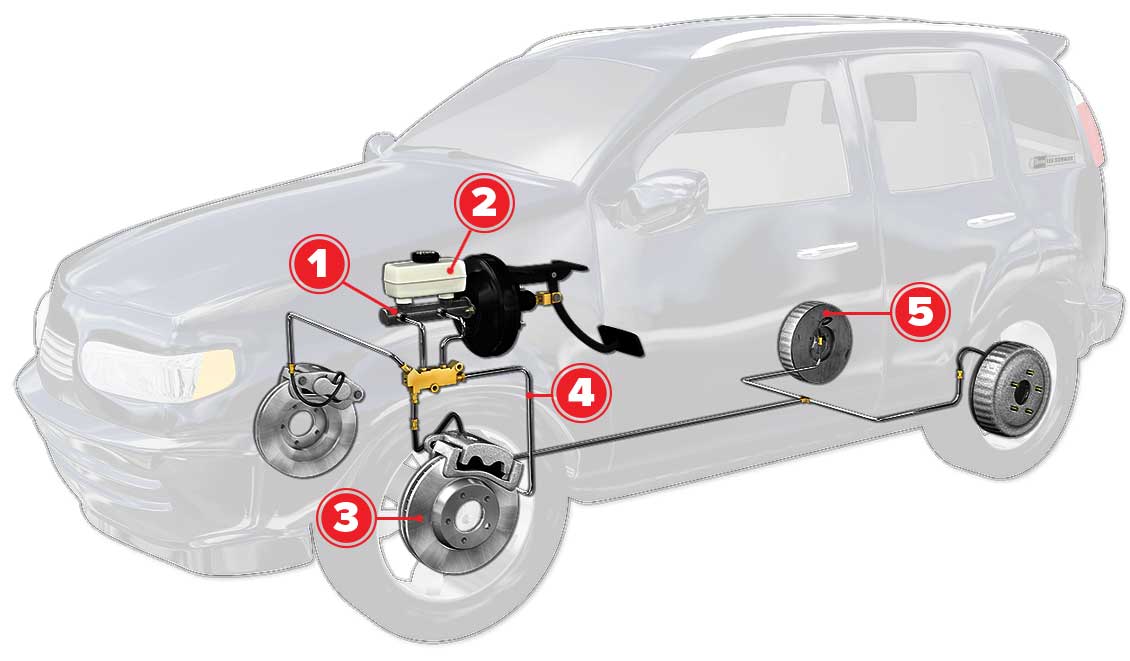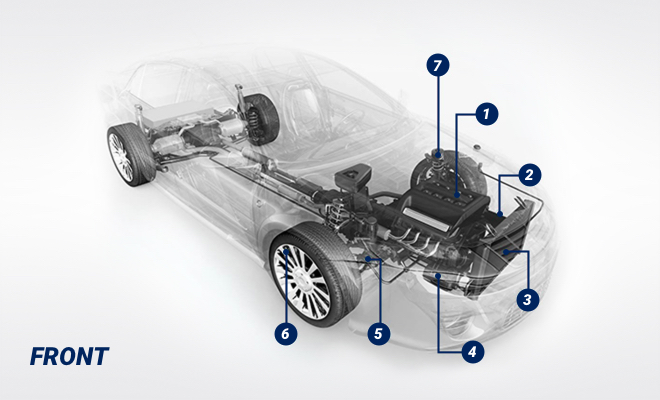A car parts diagram is an accurate representation of the different components and systems in a vehicle. In this diagram, you can find labels and illustrations of various parts such as the engine, transmission, brakes, suspension, and electrical systems.
It provides a visual guide for understanding how these parts are connected and work together to make a car function. Familiarizing yourself with a car parts diagram can be helpful in troubleshooting issues, identifying specific components, and gaining a better understanding of your vehicle’s overall structure and functionality.
Table of Contents
Importance Of Understanding Your Vehicle’S Anatomy
Understanding the anatomy of your vehicle is crucial for safe and efficient operation. It allows you to make informed maintenance decisions, ensuring optimal performance. By familiarizing yourself with the car parts diagram, you gain knowledge about the various components that make up your vehicle.
This knowledge empowers you to identify any potential issues and take early preventive measures. Whether it’s the engine, suspension, or electrical system, knowing how everything fits together enables you to diagnose problems accurately and efficiently. Moreover, it gives you the confidence to communicate effectively with mechanics or technicians when seeking repairs or replacements.
Having a clear understanding of your vehicle’s anatomy not only enhances your driving experience but also helps you save time and money by avoiding costly breakdowns or unnecessary repairs. So, take the time to study the car parts diagram and gain a deeper appreciation for the inner workings of your vehicle.

Credit: www.lesschwab.com
Major Car Parts Explained
The engine is the powerhouse of the vehicle, providing the necessary power for movement. The transmission plays a crucial role in transmitting this power to the wheels. Meanwhile, the drivetrain connects the power from the engine to the wheels. The suspension system supports the vehicle and provides cushioning, ensuring a smoother ride.
Brakes are responsible for slowing down and stopping the vehicle when necessary. The steering system offers control and maneuverability, allowing drivers to navigate their desired paths. Lastly, the electrical system powers the vehicle, ensuring all functions operate effectively. Understanding these major car parts helps drivers comprehend the essential components that make their vehicles function properly.
Engine Components
The cylinder block is the housing for the cylinders in the car’s engine. It provides stability and support. Pistons are responsible for converting the pressure from the combustion process into mechanical energy. They move up and down within the cylinders.
The crankshaft is essential for taking the piston’s linear motion and converting it into rotational motion. It transfers the power generated by the pistons to other engine components. The camshaft plays a crucial role in opening and closing the valves of the engine.
Valves regulate the air and fuel flow into and out of the cylinders. The fuel injection system delivers fuel to the engine, ensuring proper combustion. The ignition system provides the spark needed for the fuel to ignite and power the engine.
Understanding the various engine components is essential for maintaining and repairing a car’s engine.
Transmission And Drivetrain Components
The transmission and drivetrain components play a crucial role in a car’s smooth operation. Manual and automatic transmissions offer different driving experiences. A clutch connects and disconnects the engine from the transmission, allowing for gear changes. The gearbox is responsible for altering gear ratios, enabling the vehicle to maintain the appropriate speed.
Finally, the differential distributes power to the wheels, enabling smooth turns and ensuring efficient power delivery. Understanding these components is essential in diagnosing and repairing car-related issues. Whether it’s a manual or automatic transmission, each component plays a vital role in the overall performance of the vehicle.
Proper care and maintenance can extend the lifespan of these crucial car parts, minimizing the risk of breakdowns and costly repairs. Keep these components in mind to ensure a safe and efficient driving experience.
Suspension Components
Suspension components play a crucial role in ensuring a smooth and comfortable ride. Springs, the first component, absorb impact and provide support to the vehicle. Shock absorbers, another vital element, dampen vibrations and minimize bounces. Control arms, on the other hand, connect the wheels to the chassis, maintaining stability and control.
Stabilizer bars reduce body roll, keeping the vehicle balanced during turns. Lastly, struts combine suspension and steering components, enhancing overall performance and safety. Understanding these components is essential for proper maintenance and repair of the suspension system. Regular inspection and replacing worn-out parts can help extend the lifespan of your car and ensure a pleasant driving experience.
So, stay knowledgeable about your car parts to ensure its optimal performance on the road.
Brake System Components
The brake system of a car consists of several components that work together to slow down the vehicle. Brake pads play a crucial role by creating friction that helps in stopping the car. These pads make contact with the brake discs or rotors, which provide a surface for the pads to grip onto.
The brake calipers hold the brake pads in place, ensuring they stay in close proximity to the rotors. Another important component is the brake lines, which transmit hydraulic pressure to the brakes, allowing them to function effectively. Each of these components plays a vital role in ensuring the safe and efficient operation of the brake system, ensuring reliable stopping power when needed on the road.
Understanding how these components work together can help drivers maintain their brakes and ensure their safety while driving.
Steering System Components
The steering system components play a crucial role in controlling the direction of a vehicle. The steering wheel is the primary component responsible for controlling the vehicle’s direction. It allows the driver to maneuver the vehicle by turning it left or right.
The steering wheel movement is then converted into wheel movement by the rack and pinion mechanism. This mechanism translates the rotational motion of the steering wheel into linear motion, which ultimately steers the wheels. To ensure a smooth and stable steering experience, tie rods connect the steering system to the wheels, allowing for precise control.
Additionally, power steering assists the driver with the steering effort, making it easier to turn the wheels, especially in parking or tight spaces. Understanding these steering system components helps in maintaining and troubleshooting any steering-related issues in a vehicle.
Electrical System Components
The car’s electrical system is essential for its proper functioning. The battery supplies electrical power to all components, ensuring they work efficiently. The alternator generates electricity and charges the battery to maintain power. The starter motor is responsible for initiating engine cranking.
Spark plugs play a crucial role in igniting the air/fuel mixture in the engine, enabling combustion. Lastly, the wiring harness transmits electrical signals throughout the vehicle, ensuring proper communication between different components. Each of these electrical system components has a unique function and plays a vital role in the overall operation of the car.
Understanding their roles can help car owners diagnose and address any potential issues or failures in the electrical system.
Conclusion
With a proper understanding of a car parts diagram, you can feel more confident and knowledgeable about your vehicle. Knowing the different components and how they work together allows you to identify and address any issues that may arise. By familiarizing yourself with the various car parts, you can communicate more effectively with mechanics and make informed decisions about repairs and maintenance.
Remember, regular inspections and servicing are essential for ensuring the longevity and optimal performance of your vehicle. Additionally, being aware of the various car parts empowers you to take preventative measures, such as checking fluid levels and changing filters, to keep your car in top condition.
Whether you’re a car enthusiast or simply want to have a basic understanding of your vehicle, a car parts diagram is a valuable resource that can enhance your overall driving experience. Written by an SEO friendly content writer.
